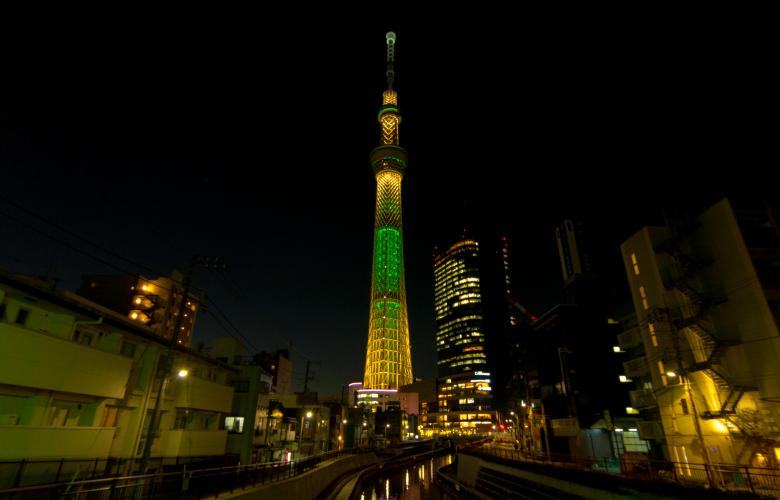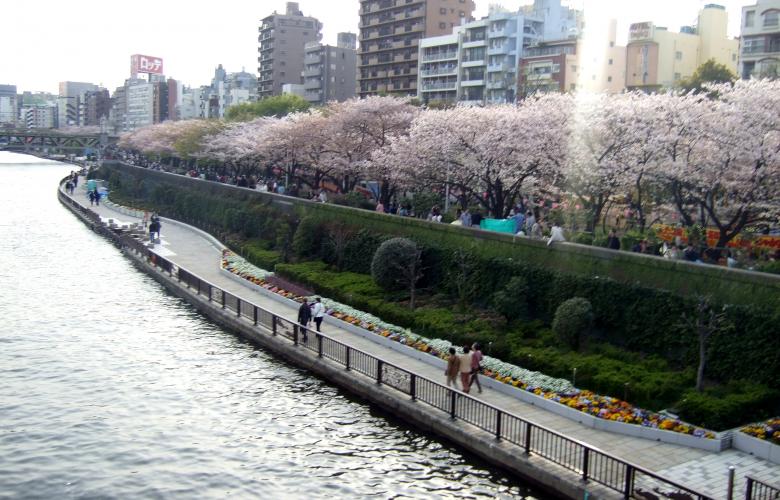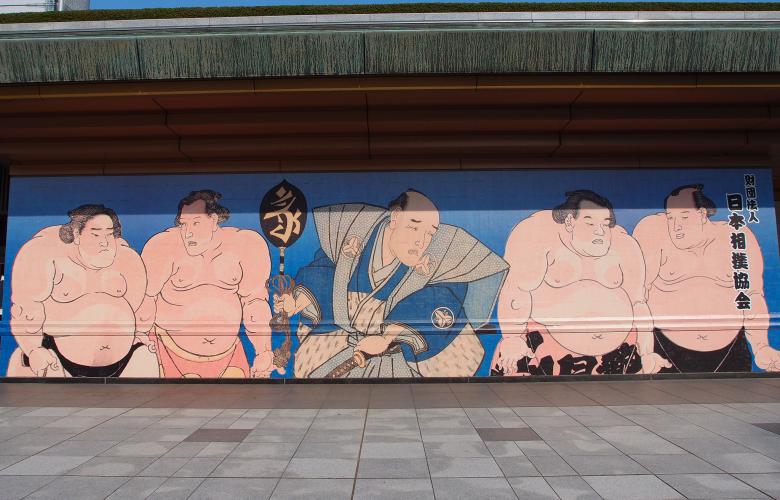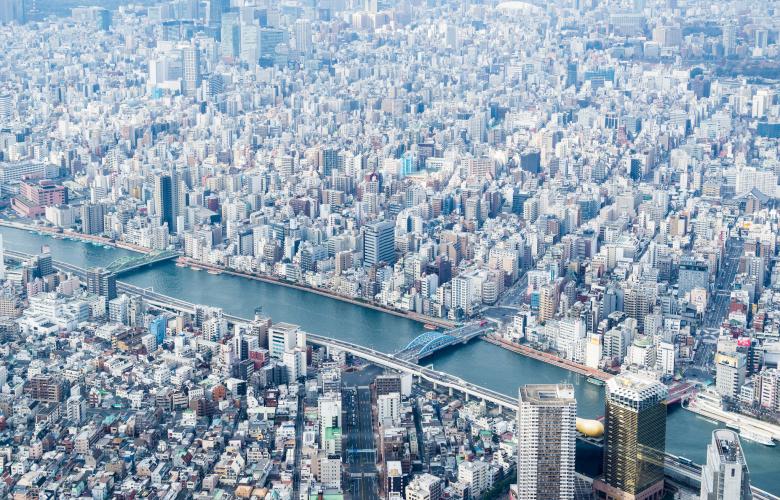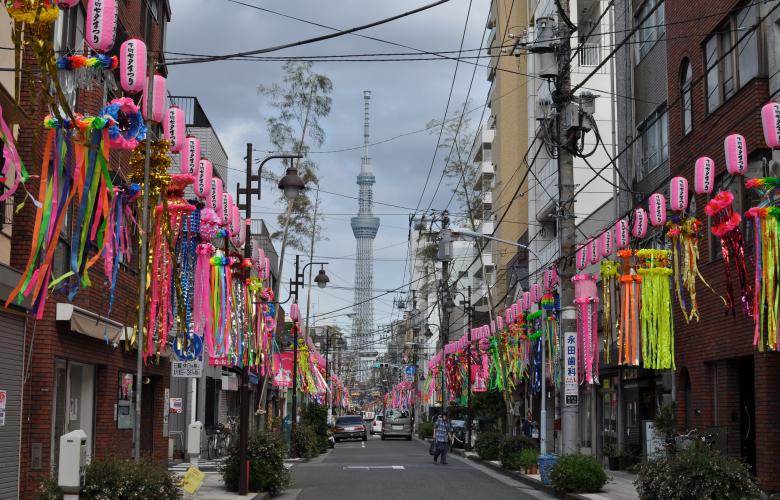Sumida area overview
Located in Tokyo’s Northeast, Sumida-ku (officially translated as Sumida City in English, but commonly known as Sumida ward) covers an area of 13.77 km2. It borders on the Arakawa and Sumida rivers as well as Chuo, Taito, Katsushika, Koto, Adachi, Arakawa, and Edogawa wards. Together, the latter wards and Sumida are known as shitamachi to Tokyoites. Literally meaning ‘under city’, shitamachi refers to the geographically lower lying parts of Tokyo. Those areas away from the city centre are associated with Showa Era charm of days gone by. Sumida Ward is home to Ryōgoku, Tokyo’s sumo district, traditional bathhouses, narrow streets lined with mom and pop shops, and traditional gardens and green river banks, which all give the area its typical shitamachi flair. At the same time, since the opening of Tokyo Skytree, the tallest building in Japan and the third-tallest building in the world, the area is gentrifying rapidly.
Lifestyle
Without doubt, Sumida is one of Tokyo’s most fascinating neighbourhoods. Nowhere is the contrast between old Edo and Japan’s thirst for modernity as stark as it is here. For the longest time Sumida was considered as a relic of the Showa Era, that saw Japan prosper after WWII while holding on to its traditional lifestyle. Two-storey homes, sometimes even with small gardens in front, have dominated the district for decades. The living areas are transected by small shotengai shopping streets and in winter, the neighbourhood watch patrols, warning people to take care that their kerosene burners don’t cause a fire in the area that is tightly packed with wooden buildings.
However, Sumida ward is undergoing rapid change now, as if to finally catch up with the rest of the capital. The district was selected as the location for the Tokyo Skytree, which now towers over its traditional bathhouses and shrines. The area around Kinshichō was heavily modernised with a new station building and adjacent shopping malls. Both developments kicked off the gentrification of the area, and modern apartment complexes now rise where traditional houses once stood.
Additionally, a non-commercial development is taking hold of Sumida: It has become the home of a young and independent art and design scene. In many places, galleries, shared community spaces and funky little cafés opened, adding another dimension to the vibrant and unique flair of the ward.
Demographics of area
Sumida counts 269,815 residents. With a population density of 19,189, it is one of Tokyo’s most densely populated wards. There are 12,056 registered residents of foreign nationality. As the ward develops a budding art and design scene, that number might as well increase in the near future. Currently the average age of its residents is 44.9 years, making it one of Tokyo’s older wards, which is typical for the shitamachi areas. However, with heavy developments especially around Kinshichō Station and the Skytree area, the ward is becoming more attractive for young families.
Amenities and attributes
Sumida offers two prime locations for shopping: the upscale Solamachi Mall in Tokyo Skytree and several shopping malls around Kinshicho Station. Most popular are the Marui department store and Termina department store, which connects to the station building and houses over 100 stores.
International supermarkets are mostly found in central Tokyo wards, but Sumida has lots of small shopping streets, called shotengai in Japanese, with rows of small mom-and-pop stores that specialise in certain types of foods like tofu, Japanese sweets or rice crackers. Larger supermarkets are found close to all of the major stations.
No international hospitals are located in Sumida, but the ward is serviced by several Japanese hospitals that might or might not have English-speaking physicians on duty.
Major stations of Sumida ward include Kinshichō, Morishita, and Ryōgoku. Kinshichō Station offers the most convenient public transport connections to both JR and Metro trains. It takes about 55 minutes to Haneda Airport and 1 hour and 10 minutes to Narita Airport. Shinjuku and Shibuya stations, Tokyo Tower and other locations in Minato ward (where many international corporations have their Tokyo headquarters) are all about 40 minutes away by public transport.
Real estate details
Real estate in Sumida falls into the medium price range of Tokyo’s wards. Newly built properties 5 years or less in age sell for around JPY 880,000/m2 on average and JPY 810,000/m2 for 10-year-old buildings. Prices drop considerably for older real estate: 20-year-old buildings cost JPY 690,000/m2 on average, while buildings of 30 years or more, which are generally considered fully depreciated on the Tokyo market sell for around JPY 605,000/m2 .
While sold at cheaper prices than properties in Central Tokyo, rent is comparatively high, a phenomenon known as rent distortion, which results in good ROI for properties in outer Tokyo wards. Newly built Sumida Ward properties fetch on average JPY 3,810/m2. The income gradually decreases to JPY 3,590 for 10-year old buildings, JPY 3,200 for 20-year old buildings and finally, even 30-year-old properties still offer monthly gains of JPY 2,900/m2. Gross yield for a 10-year-old property is around 5.3%, while a 30-year-old property can fetch up to 5.75%. However, older properties might bear other risks that must be considered before purchase.
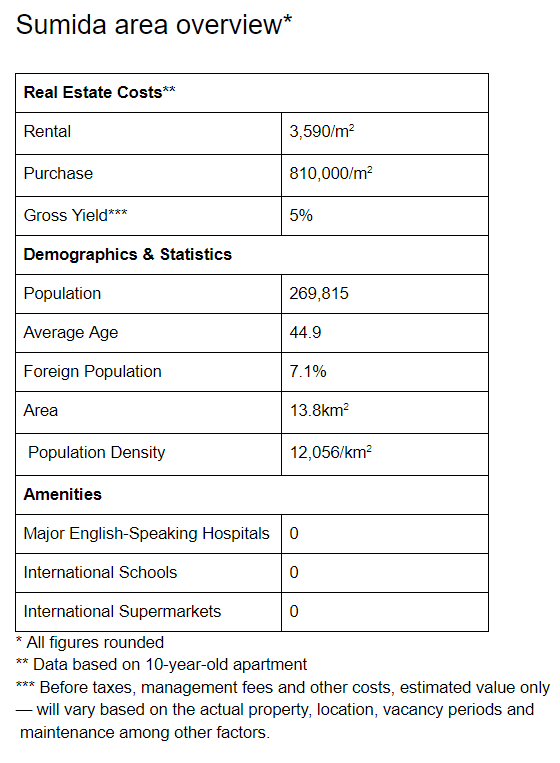
By Mareike Dornhege
Similar to this:
Katsushika area guide: A calm space in the north of Tokyo
Kita ward: A former writers' and artists' quarter turned urban green sanctuary
Adachi: All you need to know about one of Tokyo’s most reasonably priced area

